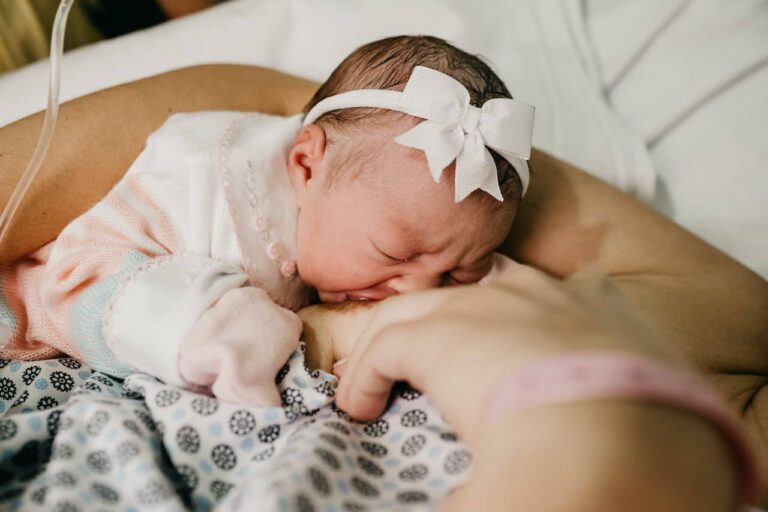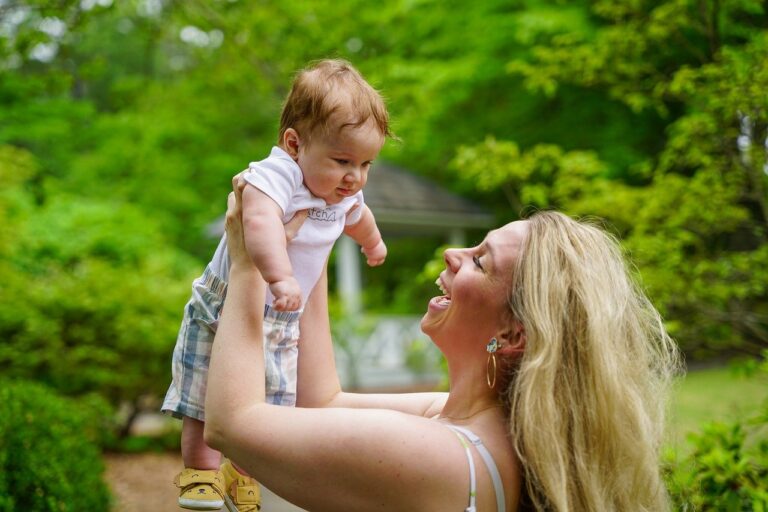Is It Safe to Have Bubbles in Breast Milk?
Pumping can save you time without compromising your child’s nutrition, whether you are busy in the office or have an urgent trip in the next few days. Pumping is a lifesaver for many mothers who have difficulties breastfeeding their infants. Plus, pumping and storing breast milk allows other family members to nurse the baby without the mom around.
Pumping takes plenty of care, and you will need the proper equipment to collect and store breast milk. Taking precautions while pumping ensures you have the highest quality milk for your baby.
You might encounter a few bubbles in your breast milk while pumping. While it is not the end of the world to find bubbles in your milk, it is also not advisable to leave excess air in your supply. So what can you do about those intrusive bubbles?
Skip To The Following Sections
- What Causes Bubbles to Appear in Breast Milk?
- Is It Safe to Feed My Baby When There are Bubbles in Breast Milk?
- How Do I Get Rid of Bubbles in Breast Milk?
- Tips on How to Safely Handle and Store Breast Milk
- Tips for Thawing and Warming Breast Milk
- Maintaining a Breast Milk Storage and Feeding Schedule
- FAQ
What Causes Bubbles to Appear in Breast Milk?
First and foremost, bubbles are not a sign that your milk is spoiled. Instead, some excess air has gotten into the liquid and, in turn, made bubbles appear on the surface. Most of the time, the bubbles are harmless, and you can remove them without problems.
But where are these bubbles coming from? There are plenty of reasons why your breast milk might be bubbly in the first place.
First, you can consider the protein content of the milk. Protein can cause the milk to bubble when shaken. This kind of air bubbles will not cause harm to your infant.
Having a forceful letdown reflex can also cause a bit of frothing. Some mothers have fast letdown speeds that can trigger air bubbles while pumping. Again, this kind of bubbling is not dangerous to your infant.
Storage also matters. Using the correct storage lessens the chance of air bubbles forming and provides a longer shelf life for your breast milk. Specialized breast milk bags are a great option since you can squeeze out the excess air after a pumping session.
Your equipment can also cause issues and introduce air into the breast milk. Your pump must have a tight suction on your breast to properly extract the milk. Any loose connections can introduce unwanted air into your supply.
Finally, you can find bubbles in your breast milk if it is exposed to soap residue. Unwashed soap from bottles or storage bags can mix into your breast milk and cause bubbles. Unlike air bubbles, you cannot get rid of soap bubbles.
Is It Safe to Feed My Baby When There are Bubbles in Breast Milk?
While having bubbles in your breast milk will not put your baby in life-threatening danger, it can cause an upset stomach and a case of colic. The excess air can disrupt your baby’s guts and leave them uncomfortable and cranky.
Parents should be extra careful when handling frozen breast milk with air bubbles. Any excess air inside a bag of frozen breast milk can cause freezer burns. When thawed, this can lead to a higher risk of gassiness and an even higher risk of your baby crying for hours.
How Do I Get Rid of Bubbles in Breast Milk?
Let’s say you found some air bubbles in your breast milk. What do you do now?
You can first consider how you handle your breast milk. It is best if you refrain from shaking the bag while handing it. Instead, stir it gently with a spoon before storing it away.
Using specialized breast milk storage bags that can be vacuum sealed is also a good option. This option can reduce storage space and decrease the possibility of air bubbles and contaminations. Just know that this option can be pricey.
To avoid soap bubbles in your breast milk, wash your baby bottles and storage bags thoroughly before use. Likewise, keep your pumping equipment well-washed and soap residue-free. Unlike air bubbles, soap bubbles cannot be removed once it mixes with your supply.
Finally, ensure your pump is still functional and can suction onto your breast without any problems. Any loose components can lead to excess air getting into your supply.
Tips on How to Safely Handle and Store Breast Milk
Besides air and soap bubbles, there are other things you should be worried about when handling and storing your breast milk, such as temperature, bacteria, and spoilage. Proper storage can make breast milk last longer and stay safe to consume.
Freshly pumped breast milk has only 4 hours of shelf life if left at room temperature or colder. When refrigerated, stored breast milk can stay fresh for up to 4 days. Inside the freezer, your breast milk can go for 6 to 12 months. Breast milk that was once frozen and left to thaw has a shorter lifespan, and any leftover from nursing only has 2 hours before it goes bad.
When collecting breast milk, it is recommended to always wash your hands thoroughly. Alternatively, an alcohol-based sanitizer is also an acceptable option if no handwashing place is available. Equipment should also be clean and mold-free.
Avoid using non-food grade containers and plastic bags when storing your breast milk. These containers are not meant to hold breast milk and could lead to contamination or punctures in the bag.
Finally, always use the oldest bag first. You do not have to store loads of breast milk since milk gets less nutritious as it ages. Stocking smaller amounts can lessen the chances of spoilage.
Pumping and storing breast milk sounds like hard work. However, the time you save and the convenience you get are also worth it. So do not hesitate if you believe pumping might be the option for your nursing needs.
Tips for Thawing and Warming Breast Milk
Thawing and warming breast milk properly is crucial to preserve its nutritional value and ensure its safety for your baby. Here are some helpful tips to follow:
- Thawing: When it’s time to use frozen breast milk, follow these steps for safe thawing:
- Thaw in the refrigerator: Place the frozen breast milk container in the refrigerator overnight or for several hours until completely thawed. This slow thawing method helps maintain the milk’s quality.
- Use cool water: If you need to thaw the milk quickly, you can submerge the sealed container in cool water. Never use hot water, as it can cause nutrient loss and uneven heating.
- Avoid microwaving: Microwaving breast milk is not recommended, as it can create hot spots and destroy valuable nutrients. It can also damage the milk’s antibodies and enzymes.
- Warming:
- Warm water bath: To warm thawed or refrigerated breast milk, place the container in a bowl of warm water. Swirl the container gently to ensure even heating. Avoid using hot water or boiling water directly, as excessive heat can destroy nutrients.
- Bottle warmers: Bottle warmers designed for breast milk can be a convenient option, as they provide a gentle and consistent heat source. Follow the manufacturer’s instructions for proper usage.
- Avoid stovetop or microwave heating: Heating breast milk on the stovetop or in the microwave can cause uneven heating and destroy valuable components. It’s best to stick to gentle warming methods.
Remember to always check the temperature of the milk by testing a few drops on the inside of your wrist before feeding it to your baby. Discard any leftover milk that has not been consumed within two hours after warming to reduce the risk of bacterial contamination.
Maintaining a Breast Milk Storage and Feeding Schedule
Establishing a proper storage and feeding schedule for your breast milk can help ensure its freshness and maximize its nutritional benefits. Here are some guidelines to consider:
- Label and date: Always label each container of pumped breast milk with the date it was expressed. This practice will help you keep track of the milk’s freshness and use the oldest milk first.
- Store in appropriate quantities: It’s advisable to store breast milk in smaller quantities to minimize waste and ensure that your baby consumes freshly expressed milk. Consider storing breast milk in two- to four-ounce portions, depending on your baby’s feeding patterns.
- Follow the “first in, first out” rule: When selecting breast milk for feeding, choose the oldest milk first. This approach ensures that the milk with the shortest remaining shelf life is used promptly.
- Avoid refreezing thawed milk: Once you have thawed breast milk, it should be used within 24 hours and should not be refrozen. Plan your storage and thawing quantities accordingly to minimize waste.
- Practice proper hygiene: Before expressing breast milk, wash your hands thoroughly with soap and water. Clean and sanitize pumping equipment, bottles, and storage containers according to the manufacturer’s instructions.
- Be mindful of storage locations: Store your breast milk in the coldest part of the refrigerator or freezer, away from the door, to maintain a consistent temperature. Avoid storing breast milk in the refrigerator door, as it experiences temperature fluctuations when opened frequently.
By following these guidelines, you can establish an efficient breast milk storage and feeding routine, ensuring that your baby receives fresh and nutritious milk while minimizing the risk of spoilage or contamination.
FAQ
How could I tell if my stored breast milk has expired?
Stored breast milk can expire, especially if it reaches past its shelf life. Expired breast milk will smell rotten and have a sour taste.
Why should I use a specific bag designed for storing breast milk?
Specialized breast milk storage bags keep contamination and unwanted air bubbles away from your breast milk.
What if my milk comes out runny and watery?
Runny and watery milk is safe and not something to be alarmed about. More likely than not, what you are seeing is your foremilk, and you only need to continue pumping to get to the hindmilk.












